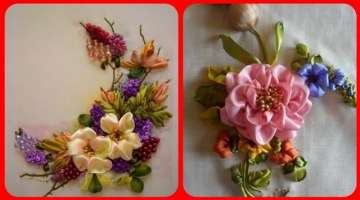Meet The Golden Tortoise Beetle – Treasure With Legs (Video + 5 Pics)
Have you ever seen these little specs of gold with legs? These tiny treasures are called golden tortoise beetles (Charidotella sexpunctata). They look very similar to ladybird beetles and can be found feasting on all types of plants, all over the world. They get their funny name from their peculiar structure, specifically their hardened wing covers which protect its flying wings.
- 1 | 6

Golden tortoise beetles look similar to lady bird beetles (the Coccinellidae family), but actually belong to the Chrysomelidae, or leaf beetles: a huge family whose 37,000 members can be found munching on plants all over the world.
- 2 | 6

Tortoise beetles get their funny name from the peculiar structure of their elytra — the hardened wing covers that protect the flying wings in beetles — which have a flattened ridge outlining the body and concealing the head and legs, much like a tortoise. Entomologists suspect this feature allows them to hunker down and tuck in their body parts when under attack from a predator.
- 3 | 6

The golden tortoise beetle is common in North America and can often be found in backyards on plants such as sweet potato and morning glory. But golden tortoise beetles aren't always so golden. In fact, they can change color depending on the season or even their mood using the liquid beneath their transparent shell. Underneath the shell are three layers of cuticle, each covered in tiny nooks and crannies that appear smooth when covered with liquid, and reflect light perfectly like a mirror. But when a golden tortoise beetle is agitated or under attack from a predator, it contracts the spaces between the layers of cuticle and forces liquid out of the grooves — doing away with the iridescence and usually revealing a brownish-orange color.
- 4 | 6

Golden tortoise beetles also change color depending on the availability of their liquid layer. During drier months the beetles become less lustrous and are more orange and bronze with flashes of iridescence. The adult beetles are distinctive in that the margins of the prothorax and elytra are expanded, largely concealing the head and appendages. The expanded margins are not pigmented, appearing nearly transparent. The beetles are fairly small, measuring 5.0 to 7.0 mm in length. The beetles vary slightly in color but invariably are orange colored, often golden metallic, and are sometimes called "goldbugs."
- 5 | 6

Eggs: The eggs are attached singly to the underside of leaves or on stems, and are white in color. The eggs are oval and flattened. They measure only about 1 mm in length and hatch in five to 10 days. Eggs are deposited in clusters of about 20 eggs. Larvae: Larvae are broad and flattened and adorned with branched spines. Their thoracic legs are short and thick, and unlike many chrysomelids they lack an anal proleg. The color of the larva is yellowish to reddish-brown. There are three larval instars. The larvae display the habit of carrying their cast skins and fecal material attached to spines arising from the posterior end of their body, a structure called an "anal fork." The anal fork is movable, and is usually used to hold the debris over the back of the body, forming a "shield" which deters predation. Larvae mature in 14 to 21 days. Here is a video on YouTube from the Terra Explorer Project of a larva creating a fecal shield.
- 6 | 6

Both larvae and adults feed on foliage. The typical form of injury is the creation of numerous small to medium-sized irregular holes. Both stages usually inhabit the lower surface, but eat entirely through the foliage. Rarely are tortoise beetles abundant enough to be considered damaging. Throughout North America, populations of golden tortoise beetles can look quite different, which has led to some confusion and multiple names for the same species. Many individuals also have black spots on the outside of their shell, which adds to their appearance as a golden lady bird beetle.



















